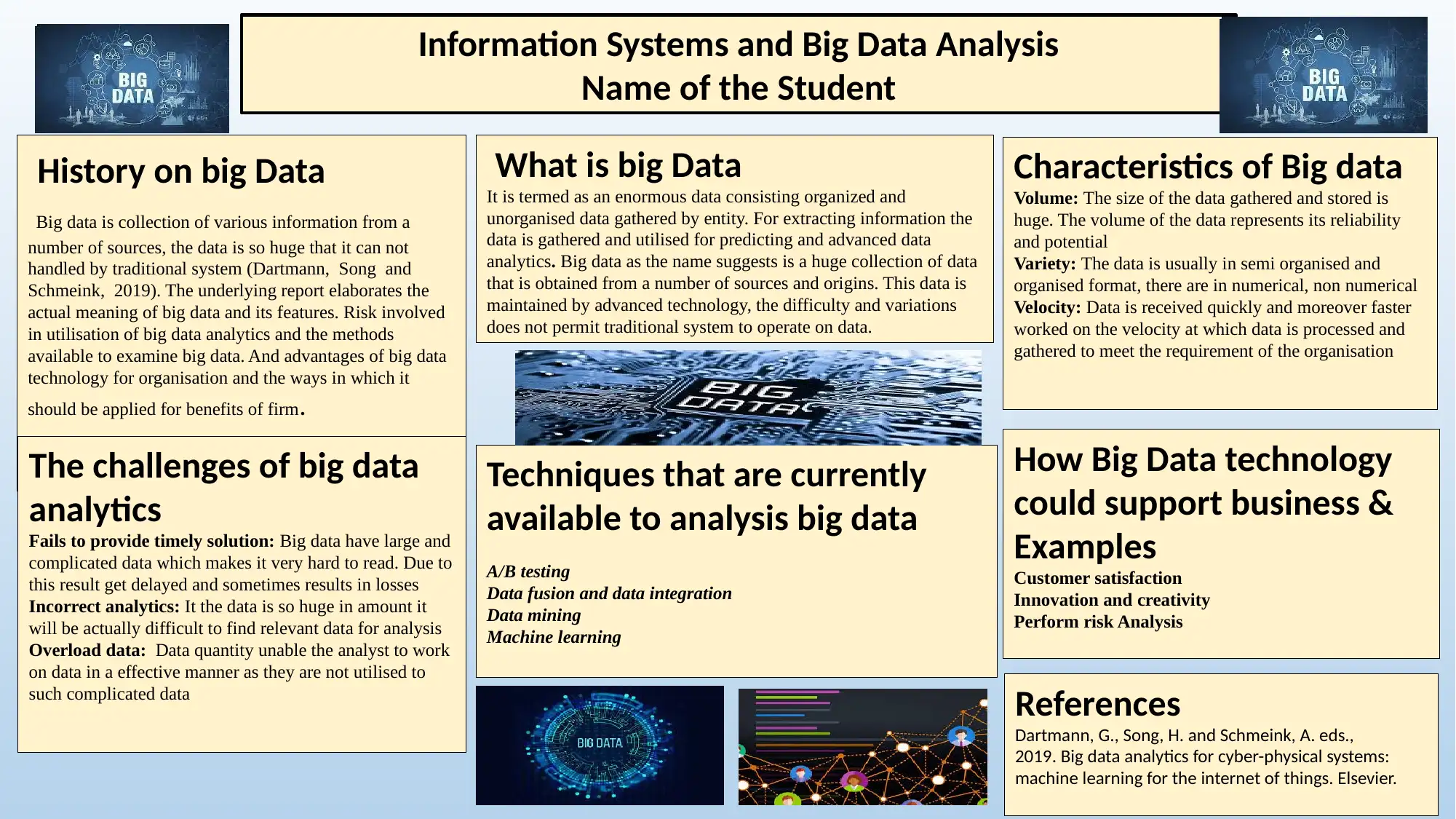BMP4005 Information Systems & Big Data Analysis: A Detailed Report
VerifiedAdded on 2023/06/07
|1
|414
|492
Report
AI Summary
This report provides a comprehensive overview of big data, starting with its definition and key characteristics such as volume, variety, and velocity. It elaborates on the challenges associated with big data analytics, including difficulties in providing timely solutions, potential for incorrect analytics due to the vast amount of data, and data overload that can hinder effective analysis. The report also discusses techniques currently available for analyzing big data, such as A/B testing, data fusion and integration, data mining, and machine learning. Furthermore, it explores how big data technology can support business objectives, providing examples related to customer satisfaction, innovation, creativity, and risk analysis. The report concludes by referencing relevant academic sources and includes a poster summarizing the main research findings.



![[object Object]](/_next/static/media/star-bottom.7253800d.svg)